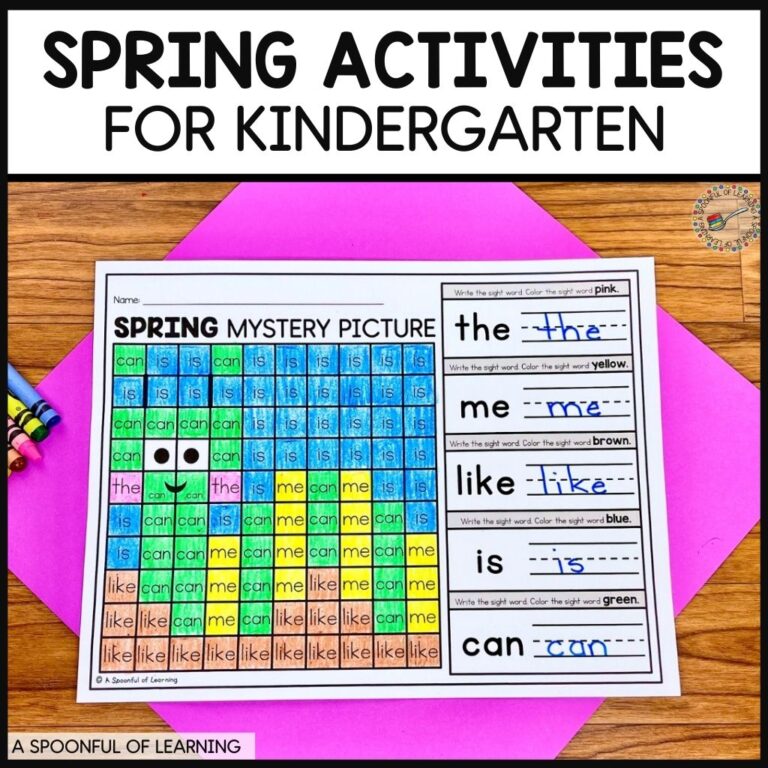
Want to try a FREE winter center activity?
Teaching story elements in kindergarten doesn’t mean just having students recite the names of the characters in a story. There are so many engaging activities that you can use to help your students understand story elements. With meaningful learning activities, your students can build a foundation for reading comprehension as they learn about story elements. Keep reading for some tips and resources for teaching story elements in kindergarten.
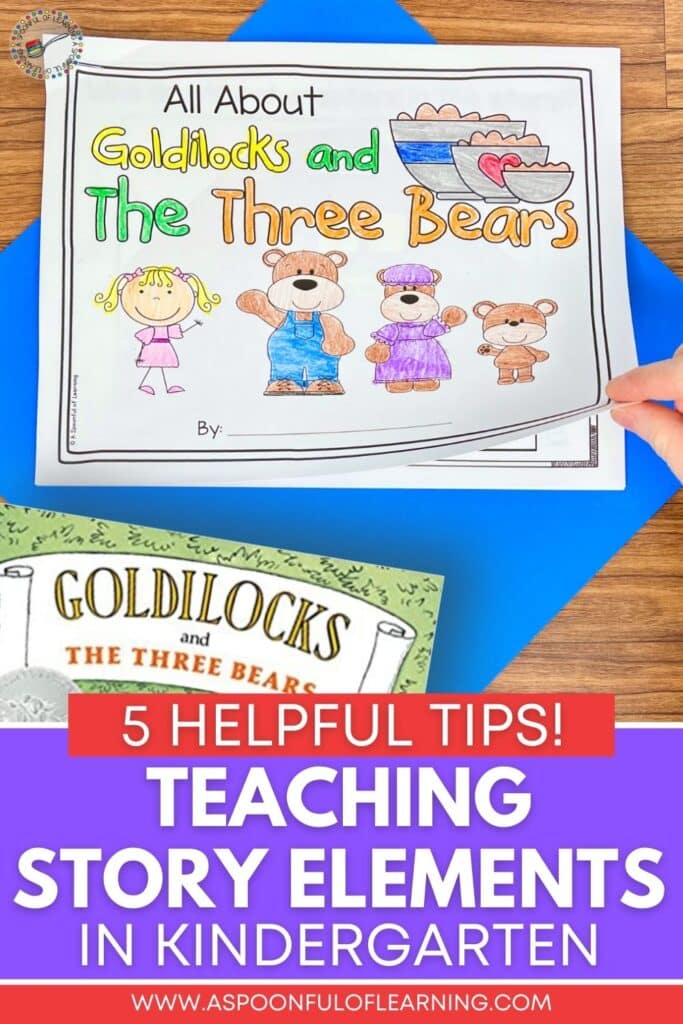
When it comes to teaching story elements in kindergarten, the Common Core State Standards outline the three that we should focus on at this age:
Characters – Who is in the story? You can discuss the names and qualities of the characters. By taking it beyond just the names of the characters, students will be able to deepen their understanding of the text.
Setting – Where does the story take place? When applicable, you might even discuss the time period of the story.
Major Events in the Plot – What happened in the story? In a kindergarten classroom, we often summarize this by discussing what happened at the beginning, in the middle, and at the end of the story.
You will likely discuss other elements of a story, including the conflict and resolution. However, these three are the main focus of teaching story elements in kindergarten.
We teach story elements in kindergarten because we want our students to become confident readers who understand what they’re reading. The attributes of story characters and the features of the setting can impact the story events. When students can recognize and understand these story elements, their comprehension improves.
Learning about story elements is such a great way to start the school year. It gives students a strong foundation for the literacy activities they’ll participate in all year long. Here are just a few tips for teaching kindergarten students about story elements.
The first step is to use engaging stories as the foundation for teaching story elements. When students are drawn to the fun characters and interesting setting, they are more likely to notice these story elements. It will be easier for them to attend to the story and be ready to discuss it.
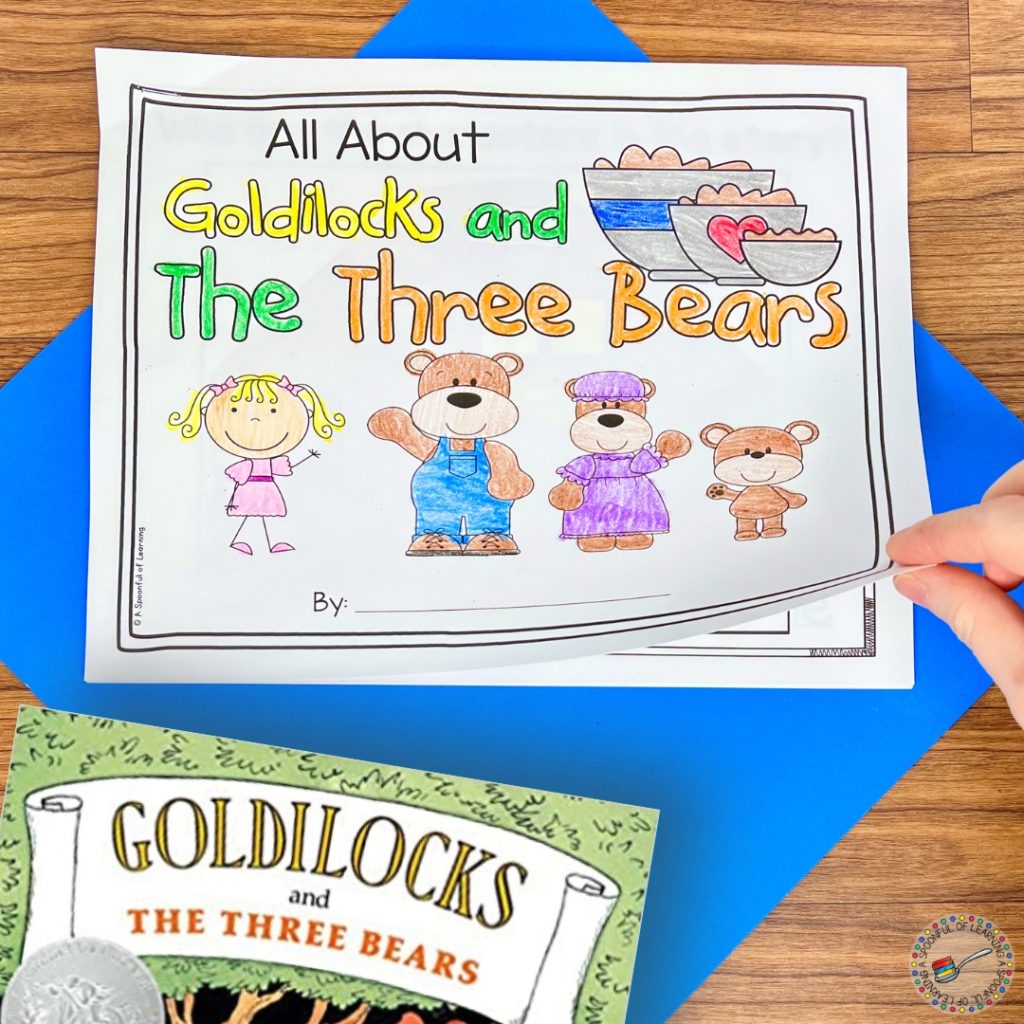
I love to use fairy tales as the foundation for teaching story elements. They have a simple list of characters, a clear setting, and a simple-but-engaging plot. Plus, there are many different fairy tales to choose from!
My next tip is to discuss the story elements as you read the story aloud to your class. Instead of waiting until you’ve read the entire story, you can discuss the characters as they’re introduced in the story.
You might decide to read the book one time through so the students can enjoy the story for the first time. Then, you could re-read the story and discuss the story elements the second time around.
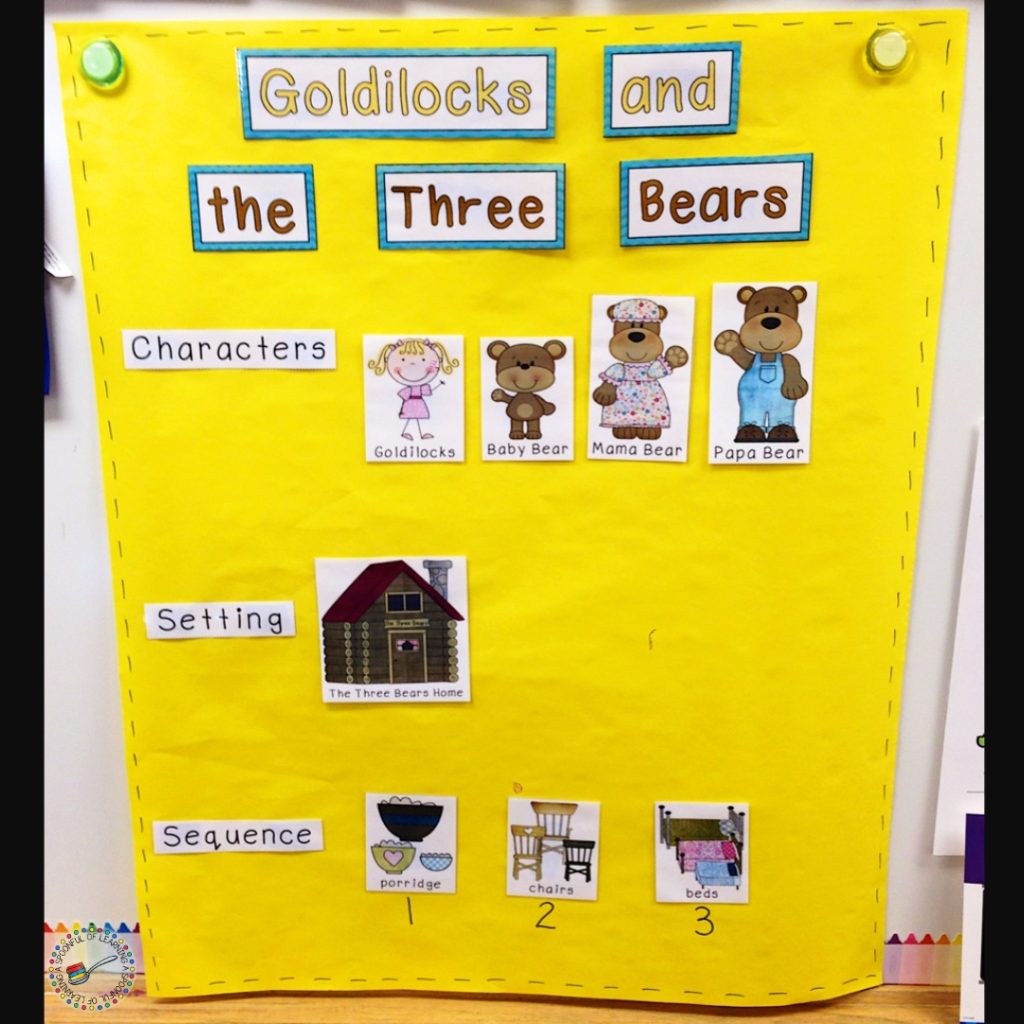
Either way, it’s helpful to create an anchor chart with the characters setting, and major events from the story. This will be a great reference for students as they complete additional activities related to the story.
After your students have had a chance to enjoy the story and discuss the story elements, you can review what you’ve discussed with whole group activities.
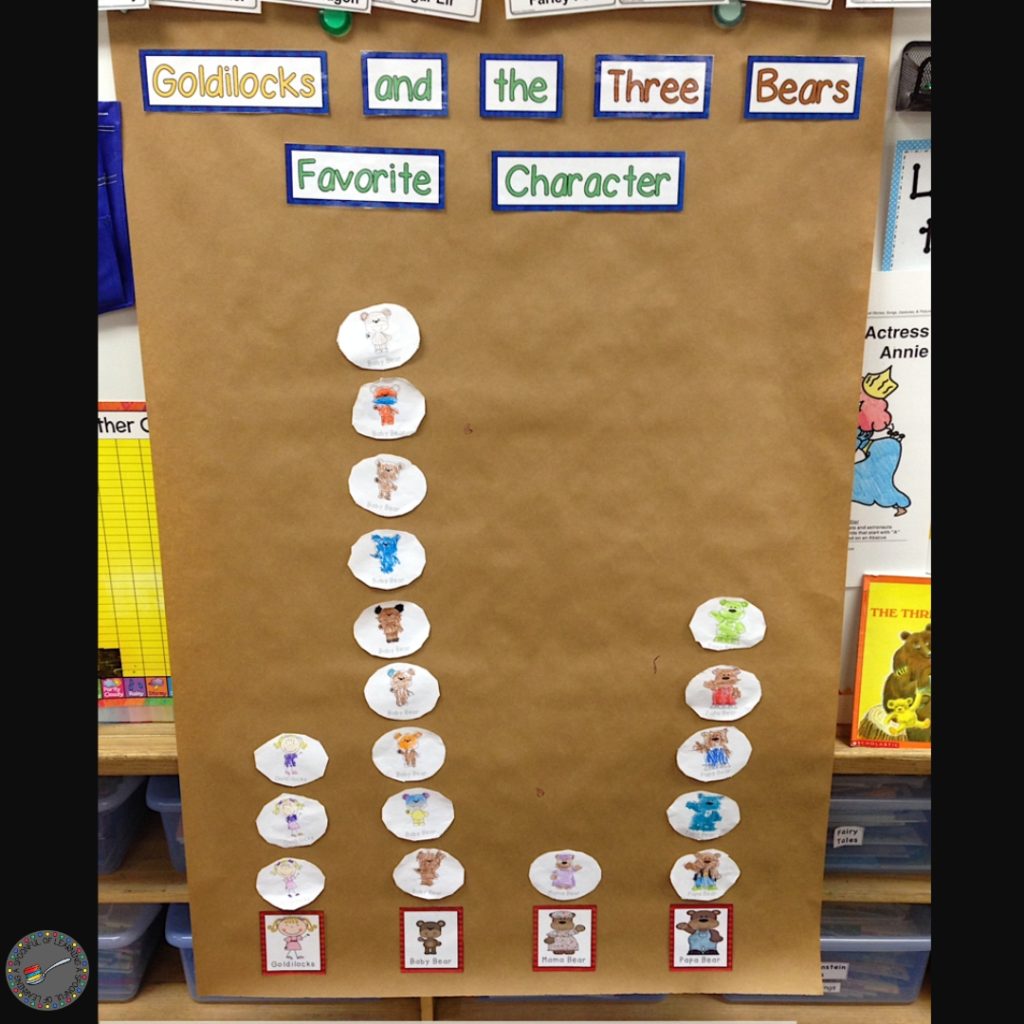
One of my favorite ways to get students to respond to a story is with a class vote. In this case, students are voting on their favorite character from the story. As students vote, they can tell you more about the characters as they explain their choices. You can also incorporate some math practice by having students analyze the class data.
Once students have had a chance to review the story elements together as a class, it’s time for some guided independent practice. Story element books, like this book for The Three Little Pigs, can be such a fun way for students to review what you’ve been discussing as a class.
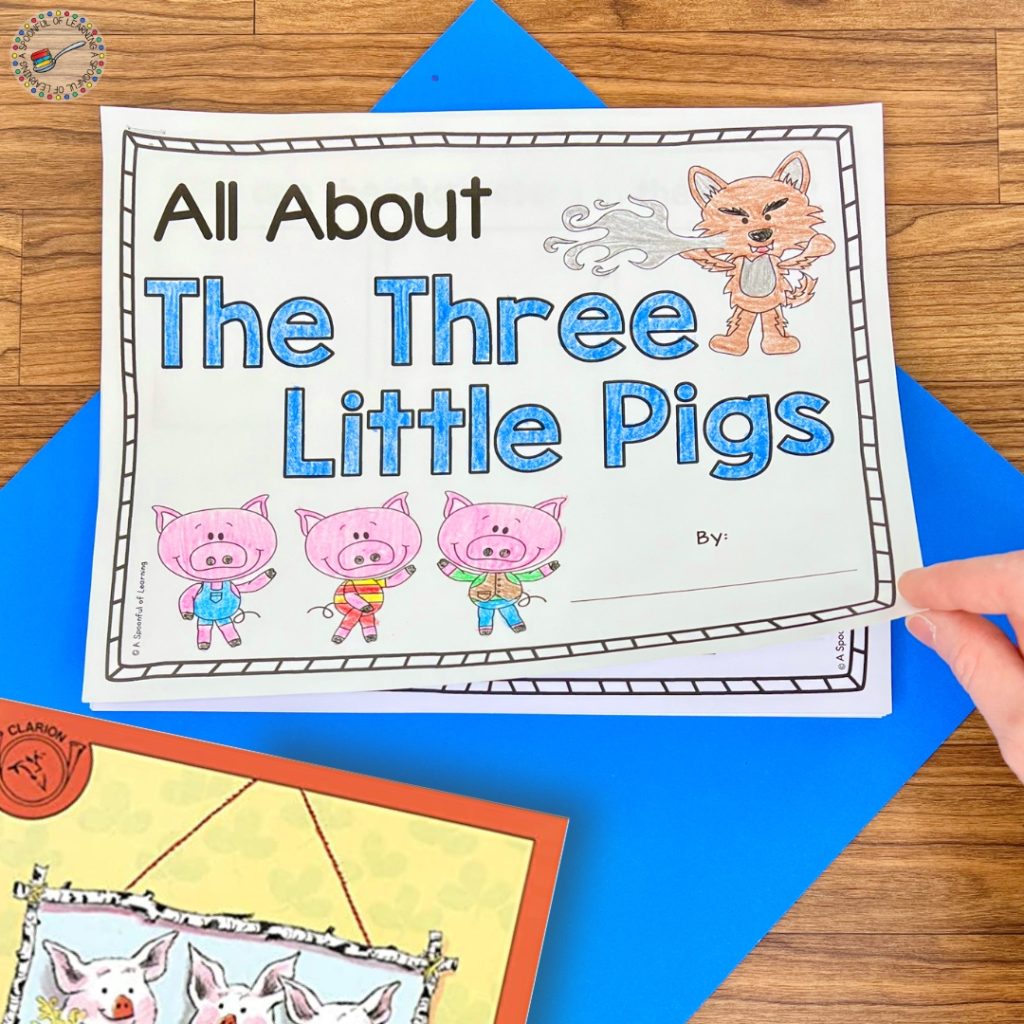
Each page of the book reviews a different story element, including characters, setting, and major events. You can have students complete one page at a time, until they have an entire book!
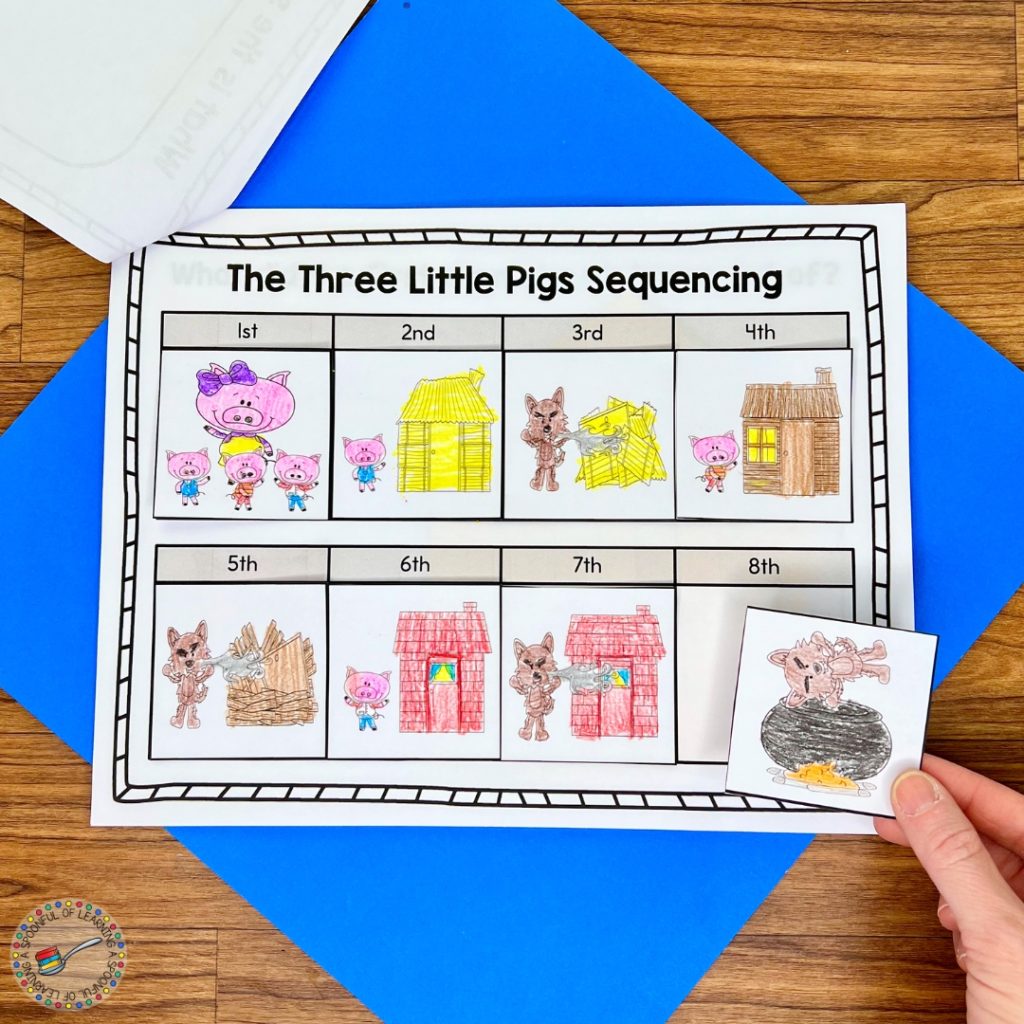
Retelling is another important part of reading comprehension and language development, and these books are a great way to help students talk about the story. They are able to flip through the pages and review the highlights of the plot in the correct order. Sequencing is another important comprehension skill that also helps students develop oral language and writing skills!
Finally, you can continue to review story elements with your students using engaging hands-on activities. This is a great way for students to summarize what they have learned while practicing additional skills.
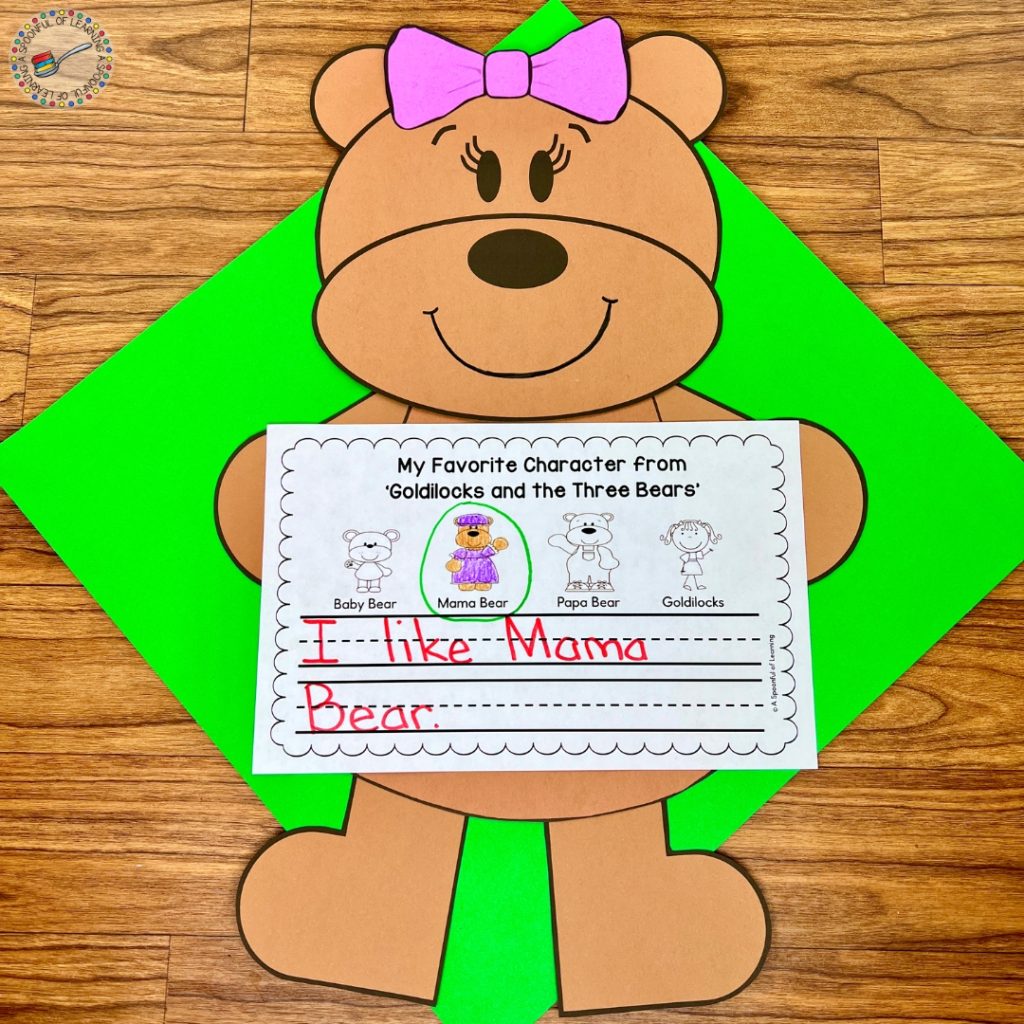
For example, after deciding on their favorite character from Goldilocks and the Three Bears, students can complete this writing craftivity. They can write about their favorite character from the story and then create a craft to go with it. These adorable crafts always look so cute on a bulletin board! Students are always eager to find their character crafts on display.
Are you looking for some engaging activities to help you introduce story elements to your students? I have the perfect bundle for you! This bundle of two fairy tale thematic units has just the perfect number of activities for the beginning of the year. Learning about story elements is a great way to kick off the school year! In addition to story element activities, these bundles include math and literacy activities that you can incorporate into your daily routine.
If you’d like to take a closer look at everything included in this bundle, just click below to find it in the A Spoonful of Learning shop or in my TPT store.
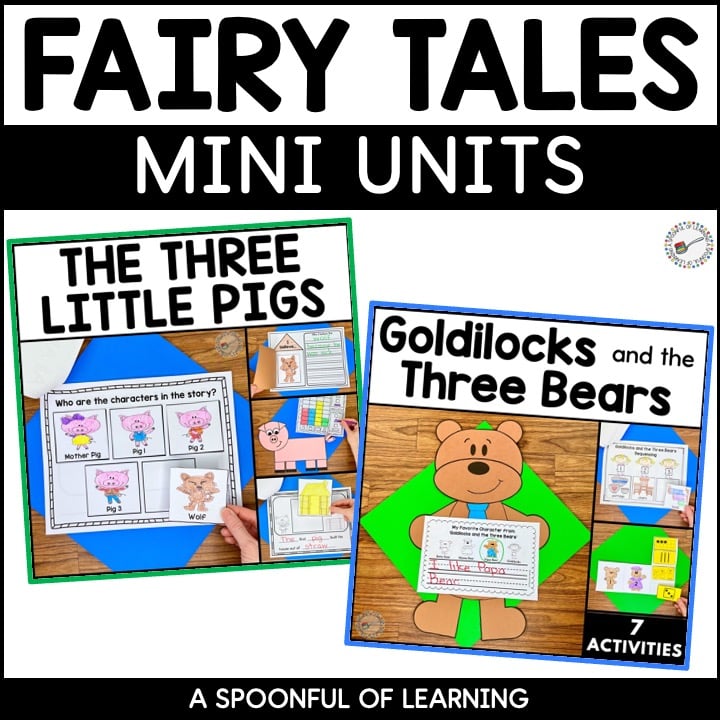
Be sure to save this post so you can come back to it later! Just add the pin below to your favorite teaching board on Pinterest. You’ll be able to quickly find these tips and resources when you’re looking for engaging activities for teaching story elements.
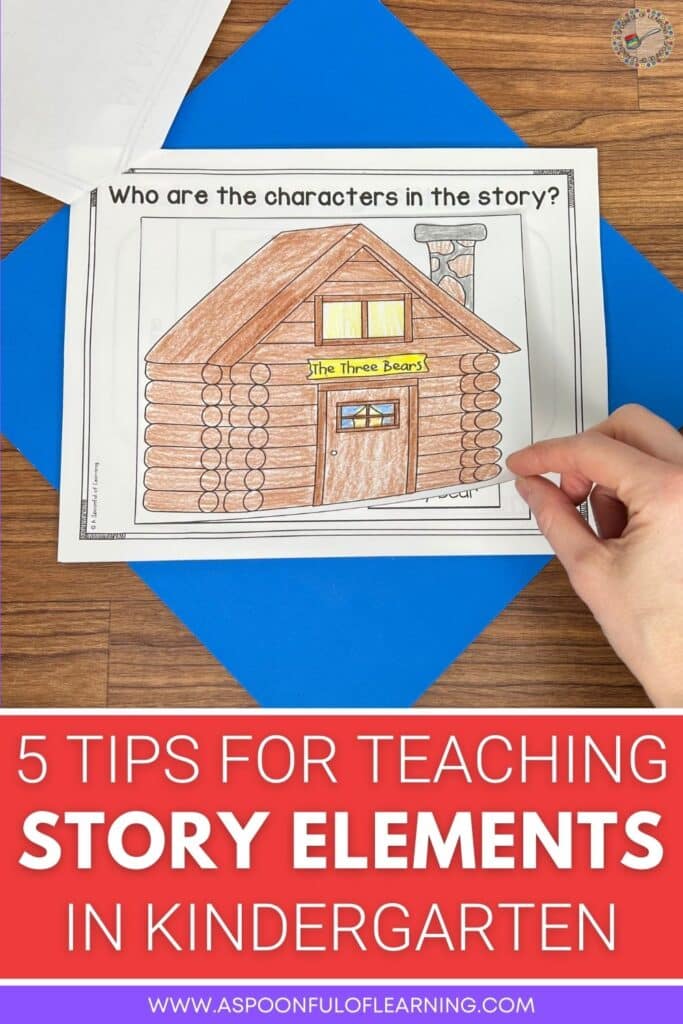
These alphabet books will have students dive deep into learning about each letter of the alphabet while eager to see what activity they get to complete next!